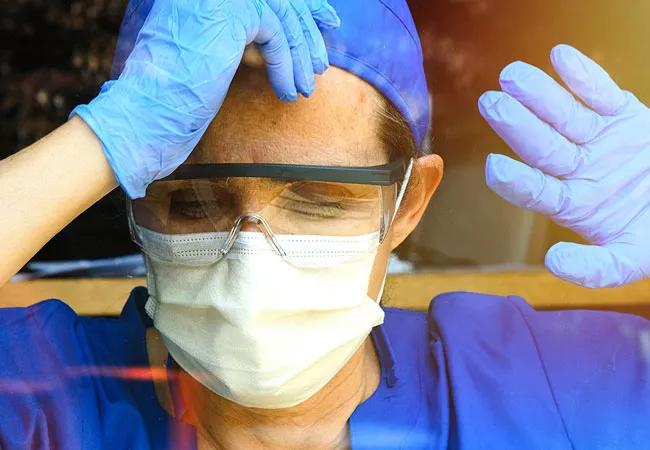What the research says on coping with patient death

During this difficult time of the COVID-19 pandemic, it is important to recognize the range of challenges faced by healthcare providers – from providing care to critically ill patients to dealing with an increase in patient deaths. A recent study conducted in China during the COVID-19 pandemic found that healthcare workers reported symptoms of depression (50%), anxiety (45%) and insomnia (34%), with nurses and those providing direct care to COVID-19 patients having an increased risk for more severe psychological distress (Lai, Ma & Wang, 2020). Exposure to the loss of patients can amplify these symptoms.
Advertisement
Cleveland Clinic is a non-profit academic medical center. Advertising on our site helps support our mission. We do not endorse non-Cleveland Clinic products or services. Policy
Beth Gardini Dixon, PsyD, a clinical psychologist in the Psychosocial Oncology Program at Cleveland Clinic’s Cancer Institute, works with nursing colleagues who frequently encounter death and dying in their clinical work. She shared that surveys of nurses who experience patient death reveal a broad range of emotional reactions, including sadness, frustration, a sense of grief and feelings of helplessness. For some, their experience contributes to a diminished sense of confidence in dealing with loss.
Several factors influence the ability to recover from loss, such as your professional developmental stage and personal circumstances. Nurses with more clinical experience tend to have a greater acceptance of death. In some situations, a caregiver’s personal circumstances, such as dealing with family stressors or providing care outside of work, may affect the ability to bounce back. Certainly, the current pandemic has introduced new, unexpected challenges that can impact coping and well-being.
One of the greatest risks to healthcare providers is professional burnout, which stems from repeated exposure to others’ pain and suffering, along with the constant demand to move on to the next patient or caregiving task. Signs of burnout include emotional exhaustion, feelings of depersonalization or detachment, and decreased capacity to be productive. Additional symptoms may involve intrusive thoughts about work, irritability, anxiety, and pessimism about the future or the value of one’s efforts.
Advertisement
Dr. Dixon says she sees some overlapping clinical features between caring for patients with certain advanced cancers and patients with COVID-19. Unpredictable disease course and limited ability to prolong life for some patients generates existential questions that can lead to uncertainty and angst. The rapid onset and decline of patients with COVID-19, and communicating with their family members who cannot be present, creates uniquely challenging emotional encounters.
As nurses and all providers continue to care for COVID-19 patients, developing and practicing effective coping skills is essential to managing the stressors of these unprecedented times. A recent review of the literature on coping with death among nurses identified the following key themes as helpful (Zheng, Lee, & Blumer, 2017):
Advertisement
Dr. Dixon says one of the most important things you can do is reach out for help when you need it. Allow yourself to accept your own human limitations. Caring for yourself is essential to maintaining your ability to care effectively for others.
Advertisement
Advertisement

First-of-its-kind research investigates the viability of standard screening to reduce the burden of late-stage cancer diagnoses

Global R&D efforts expanding first-line and relapse therapy options for patients

Study demonstrates ability to reduce patients’ reliance on phlebotomies to stabilize hematocrit levels

A case study on the value of access to novel therapies through clinical trials

Findings highlight an association between obesity and an increased incidence of moderate-severe disease

Cleveland Clinic Cancer Institute takes multi-faceted approach to increasing clinical trial access 23456

Key learnings from DESTINY trials

Overall survival in patients treated since 2008 is nearly 20% higher than in earlier patients